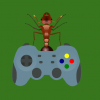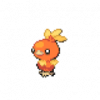Edited by The_Gaming-gate, March 28 2024 - 12:15 AM.
- Formiculture.com
- Forums
- Gallery
- Members
- Member Map
- Chat

Edited by The_Gaming-gate, March 28 2024 - 12:15 AM.
Ants are small creatures... but together... they can rule the world.
Florida has some of the best variety as far as ants go. If you blacklight at sunset or at sunrise, you are bound to find all kinds of species.
I have had nights where I have caught over 100 ants (I didn't keep all of them of course, that's insane).
I had 2 blacklights set up, one in my back yard and one in my front. My back yard didn't get nearly as much ant action, however it did get a lot of termites. My front light got an outrageous amount of ants and termites.
If you get a portable power station (I will link the one I have, it's affordable) and a halfway decent blacklight (I have 2 30w and a 40w one, but these are not necessary. A simple cheapo 15w will do) and set up, you will do great.
I recommend some glasses that block 100% UV rays (I will also link the ones I use) if you do decide to go with a stronger blacklight. My neighborhood has hella light pollution so I bought a stronger blacklight than the typical weaker ones. The portable power station also allows me to drive to the local parks or wherever else and set up for several hours, and I still end up having battery left before I end my session. (I do recommend charging it before each session, however. I don't think it would last long enough for 2 full ones). I also recommend a headlamp so that you can see while you search the white blanket for ants. I turn it on only when I'm actively looking, then turn it off when finished so that I don't burn the batteries down too quickly.. although they probably make rechargeable ones too. I keep 16x100mm plastic test tubes for catching queens because you don't need them to be long, they won't hold your queen for founding so the extra length for water isn't necessary and they won't shatter or break like glass ones. They're also dirt cheap that way. Anyway, just some tips!
Links:
https://a.co/d/g1t4Ey9
https://a.co/d/jbgCKlf
Ants are small creatures... but together... they can rule the world.
Keeping:
3x - S. molesta (colonies and single queen) 1x - C. nearcticus (founding but no eggs) ![]() New!
New!
1x - C. chromaiodes (colony) 1x - C. subbarbatus (founding)
1x - F. subsericea (founding) 1x - T. sessile (mega colony)
3x - P. imparis (colonies)
2x - L. neoniger (founding)
Check out my C. nearcticus journal here: https://www.formicul...cticus-journal/
Check out my C. chromaiodes journal here: https://www.formicul...aiodes-journal/
Currently kept species
L. neoniger, P. occidentalis, C. modoc, C. novaeboracensis, C. vicinus, T. immigrans, A. occidentalis, S. molesta, P. imparis, M. kennedyi, M semirufus, F. pacifica, P. californica, M. ergatogyna.
Previously kept species
T. rugatulus, B. depilis.
Looking for
Myrmecocystus pyramicus, Myrmecocystus testaceus
Pheidole creightoni, Pheidole inquilina, Crematogaster coarctata, Crematogaster mutans
For pavements and parks, check out the weather. If there is rain on one day, and a bright and sunny day (or cloudy) at least in the 60 degree weather mark, then you’ll definitely find some ants flying. You could also look under rocks (which believe you already do) and inside logs for Camponotus queens (have to try it out this spring). But even then, they sometimes don’t fly. And that is because of the wind. If the wind is more than 7 mph before their flight time, they will not fly. Otherwise, anything 7 or below is ideal. However, if the wind speeds up to 7 mph when it is like 3 mph for example, the hey will still fly, but the activity will decrease (especially for seaming species like P. imparis). Hope that helps!
Ants are small creatures... but together... they can rule the world.
For pavements and parks, check out the weather. If there is rain on one day, and a bright and sunny day (or cloudy) at least in the 60 degree weather mark, then you’ll definitely find some ants flying. You could also look under rocks (which believe you already do) and inside logs for Camponotus queens (have to try it out this spring). But even then, they sometimes don’t fly. And that is because of the wind. If the wind is more than 7 mph before their flight time, they will not fly. Otherwise, anything 7 or below is ideal. However, if the wind speeds up to 7 mph when it is like 3 mph for example, the hey will still fly, but the activity will decrease (especially for seaming species like P. imparis). Hope that helps!
Reading this thread reinforces my desire to move to Florida. So many cool species!
Ants are small creatures... but together... they can rule the world.
Camponotus, Colobopsis, Pseudomyrmex, Crematogaster, Solenopsis, all kinds of stuff.What ant genera/species can I expect in forested parks?
Edited by Flu1d, March 30 2024 - 2:58 PM.
Camponotus, Colobopsis, Pseudomyrmex, Crematogaster, Solenopsis, all kinds of stuff.What ant genera/species can I expect in forested parks?
Lots of different ants like grass, there's always sandy areas, then there's the trees themselves. Plenty of rotting wood to live in, and lots of insects to eat.
Also, it depends on what time you go. Will you hunt with a blacklight at night, in morning? Will you be looking in the morning after the sun comes up? Mid day? Those all change what species you will catch! But you are bound to find TONS if you're just out there sightseeing. It's a lot of fun to explore the different areas and see them in the wild!
Ants are small creatures... but together... they can rule the world.
That's gonna yield some good results because ants fly up high to mate and will see your light in the field and be drawn to it. Sounds like you have a bit of biodiversity, so you should see a lot of cool species.
I didn't even think of that! I'm probably going to get a ton of Dorymyrmex considering they seem to have taken over not only my neighborhood, but pretty much all of town.
Ants are small creatures... but together... they can rule the world.
Hey there. I live in Sarasota.
I'm new to anting but here's what I've got so far.
I'm think #1 is a Tapinoma Sessile. I found it in my back yard near the bay on June 10th
#2 I believe is a Camponotus Platanus I found at a farm near Old Myaka Preserve Park at the end of Fruitville Rd on June 21st.
#3 I believe is a Pogonomyrmex Badius I found at Old Myaka Preserve Park at the end of Fruitville Rd on June 23rd. It's hard to see in that picture, but the head on that thing is huge.
I went to the park at about 7:30 am and just started scanning the ground. I found quite a few Solonopsis Geminata too.
Any help in identifying these is appreciated.
Hope this helps.
Ants are small creatures... but together... they can rule the world.
Queen 1 looks to be Brachymymex due to the body shape. Queen 2 is C.plantus. And queen 3 is P.badius as stated. (side note: you should provide seeds for the p.badius.
Currently keeping: 2 C.vicinus colonies.2 C.sansabeanus. 1 C.leavissimus. 2 C.Ca02. 1 V.pergandei. 4 T.immigrans.1 F.pacifica. 1 C.hyatti
1 M.ergatognya
Trying to get my hands on :C.modoc,A.vercicolor, and Any Honeypots
P badius is is fully claustral, if you give her too much seeds she’ll probably leave them around and they will sprout in the nest later.Queen 1 looks to be Brachymymex due to the body shape. Queen 2 is C.plantus. And queen 3 is P.badius as stated. (side note: you should provide seeds for the p.badius.
Ants are small creatures... but together... they can rule the world.
1 looks a little like the Brachymyrmex queens I usually catch, although it may be a T. sessile. 2 is C. planatus. 3 is a Pogonomyrmex badius. Orlandian here to help!
Queen 1 looks to be Brachymymex due to the body shape. Queen 2 is C.plantus. And queen 3 is P.badius as stated. (side note: you should provide seeds for the p.badius.
This girl is SMAAAALLLLL, but she does look more like a Brachymyrmex after digging into the details.
Thanks.
Queen 1 looks to be Brachymymex due to the body shape. Queen 2 is C.plantus. And queen 3 is P.badius as stated. (side note: you should provide seeds for the p.badius.
1 is Brachymyrmex obscurior.
P badius is is fully claustral, if you give her too much seeds she’ll probably leave them around and they will sprout in the nest later.Queen 1 looks to be Brachymymex due to the body shape. Queen 2 is C.plantus. And queen 3 is P.badius as stated. (side note: you should provide seeds for the p.badius.
Got it. Thanks.
Ant Keeping →
General Ant Keeping →
What do I use for heating?Started by RainbowtheDragonCat , Mar 13 2025 |
|

|
||
 |
Anting →
General Anting →
Canadian Ant Watch ThreadStarted by OwlThatLikesAnts , Mar 12 2025 |
|

|
|
Anting →
General Anting →
Catching Alates in AZ SpringtimeStarted by Ants4ever7 , Feb 20 2025 |
|

|
||
Ants & Myrmecology →
General →
Solenopsis KrockowiStarted by AntsGodzilla , Sep 25 2024 |
|

|
||
Off-Topic →
General Off-Topic →
Creepy Things while AntingStarted by AntsTx , Sep 13 2024 |
|

|
0 members, 0 guests, 0 anonymous users